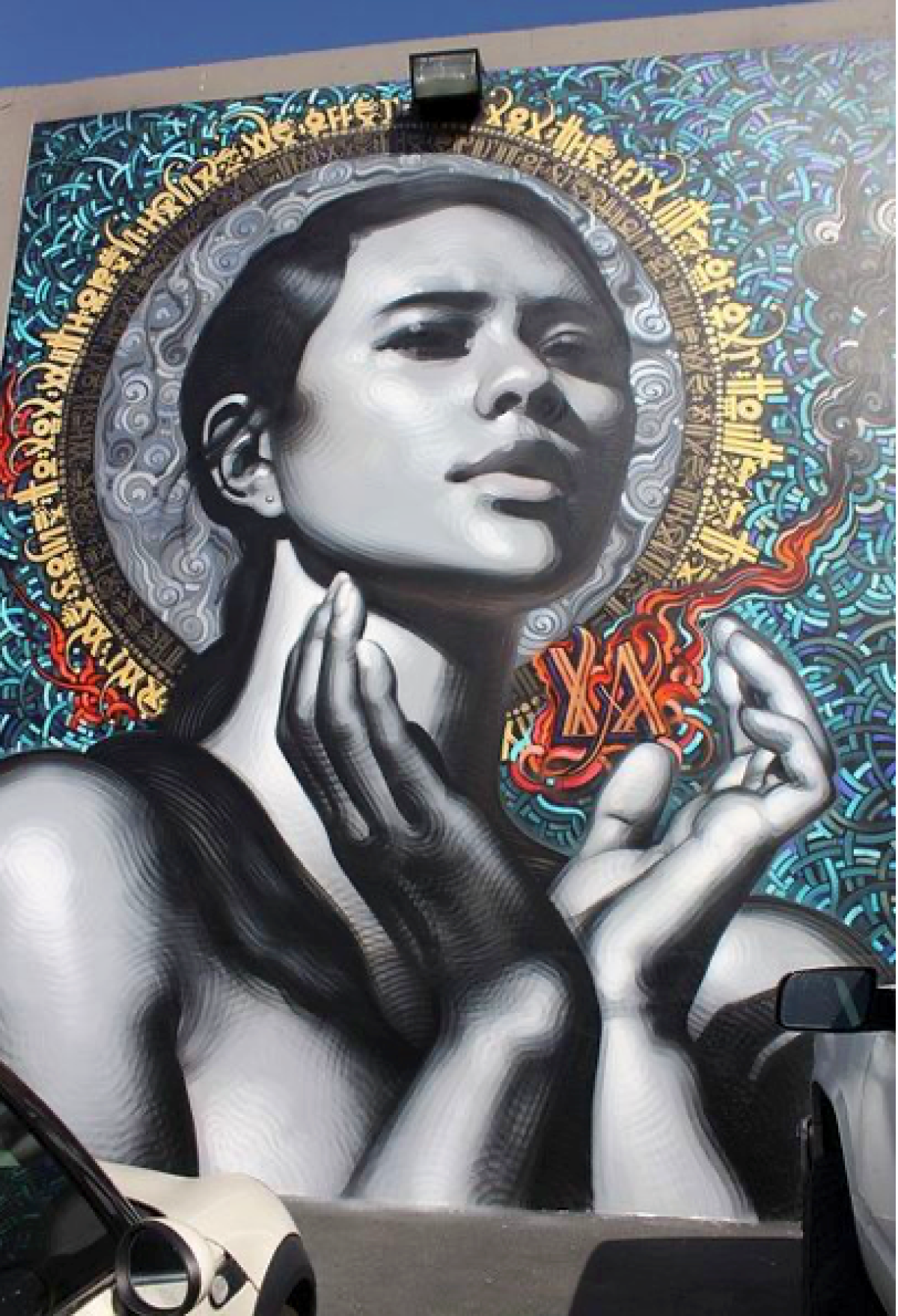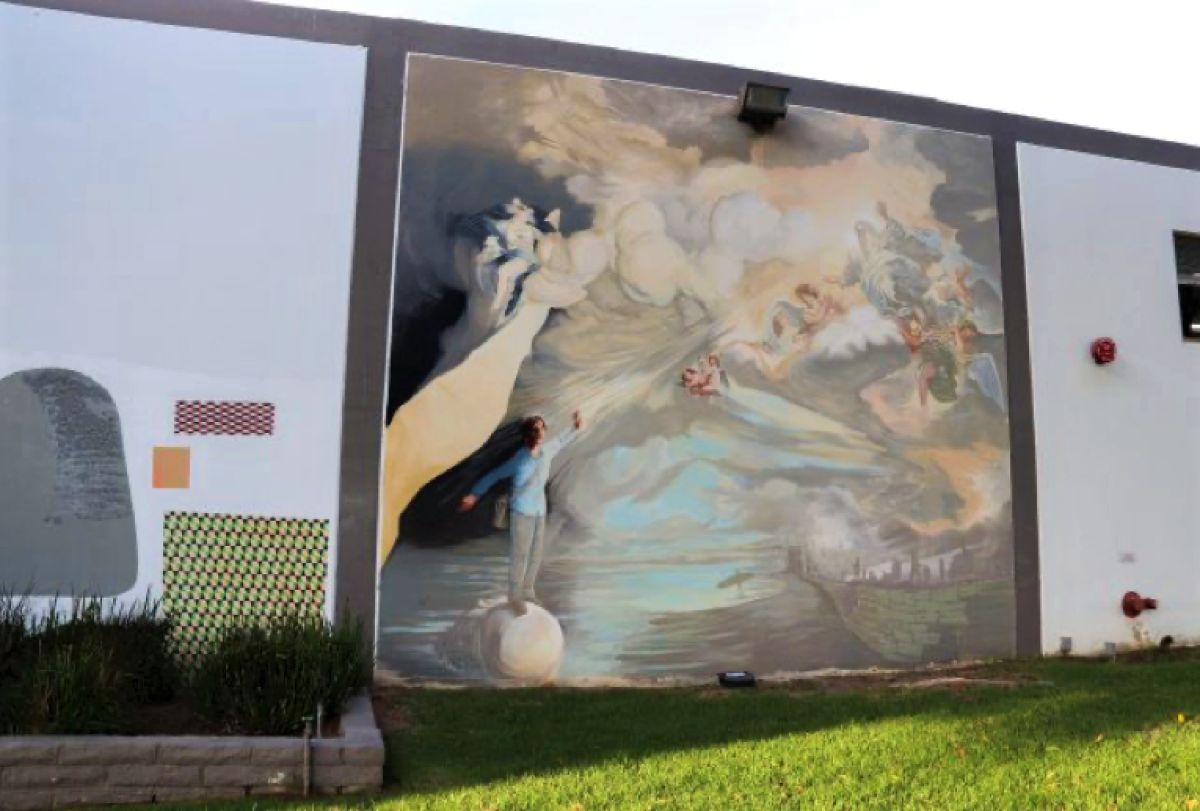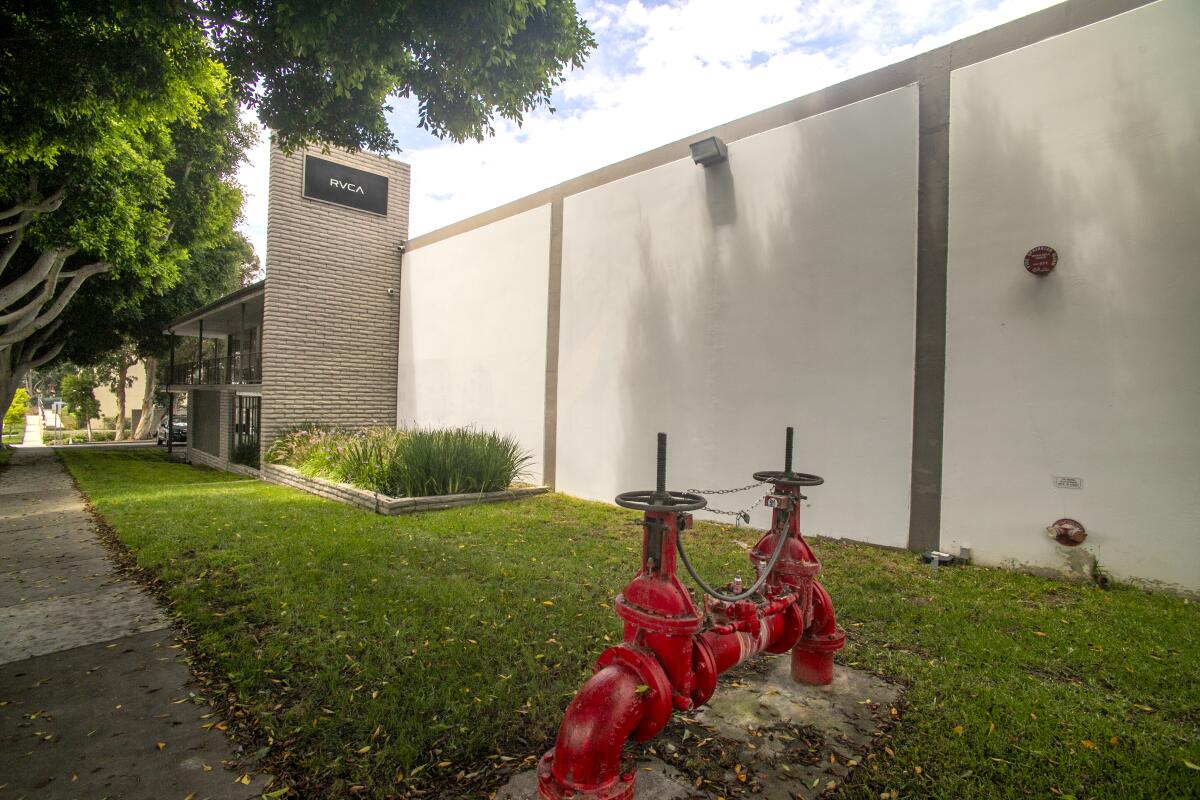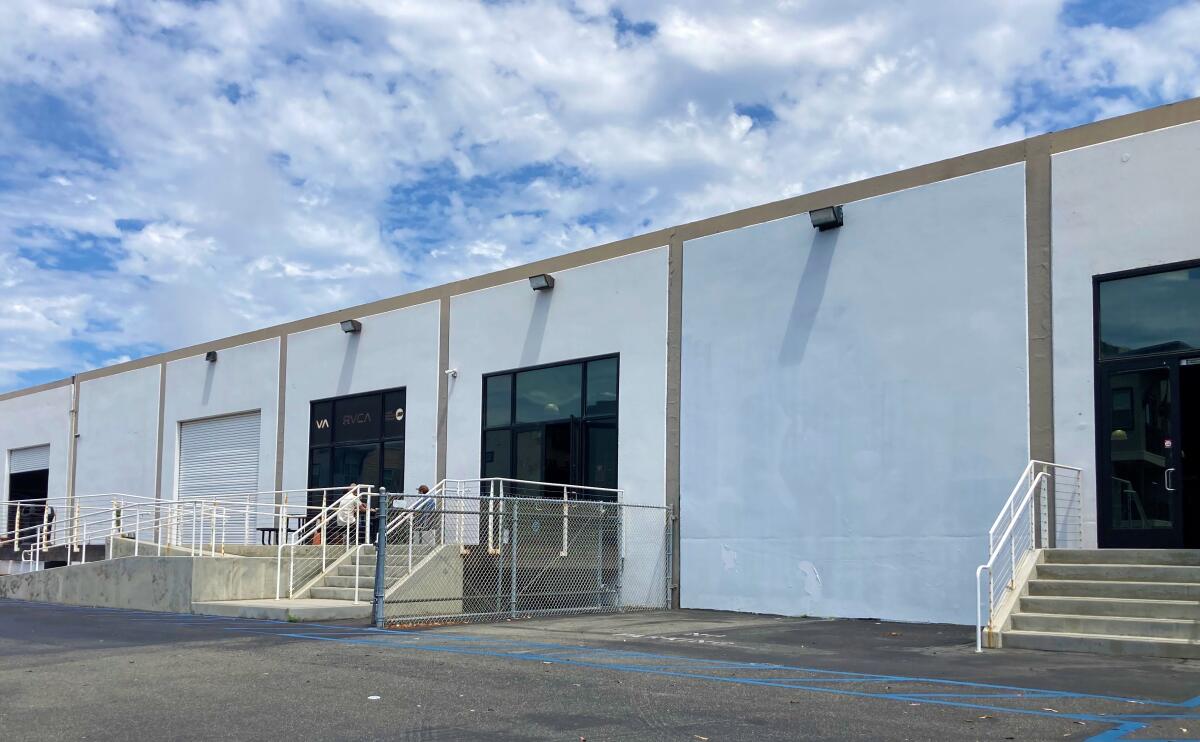Two well-known Costa Mesa murals quietly painted over

- Share via
In Costa Mesa, City of the Arts, two well-known murals — including one used by the city to market the town’s cultural riches — have been quietly painted over on a commercial property, sparking questions about what constitutes public art.
Doing business in an area primarily zoned general industrial, the headquarters of apparel company RVCA was home to two large-scale artworks visible from the street or to those who visited the retail store at 960 W. 16th St.
One of them, an untitled 2009 collaboration between globally recognized L.A. street artists El Mac, aka Miles MacGregor, and Marquis Lewis, who goes by RETNA, features a woman circumscribed by a prayer.
We come to you with open hands, we offer the fruits of our toils. These are days when our hearts and souls embrace the spirit of creation. For this we give thanks, it reads.

The iconic image has appeared in blog posts and marketing materials created by tourism nonprofit Travel Costa Mesa and is featured in the city’s Arts Master Plan and on the cover of the 2022-23 budget.
Local artist Skeith DeWine said he was shocked during a visit to the site on Monday to discover the untitled work, and another mural of unknown provenance fronting 16th Street, had been completely covered over with white paint.
“They’re super iconic to Costa Mesa’s cultural identity,” he said Tuesday, wondering whether a leasing agent for the building may have been readying the building for a sale. “There was no consideration to historical relevance or the fact that the murals were touchstones that immediately identified the city of Costa Mesa.

“[El Mac] is not just a regular artist, he’s a global artist — I don’t even know that he knows his mural has been painted out.”
An email sent to MacGregor through his website requesting comment was not answered. An employee at the retail store, who asked not to be named, confirmed Wednesday RVCA had recently been acquired and the murals painted over earlier this summer. A manager for the store could not be reached for comment by deadline.
Australian surf wear company Billabong acquired the Costa Mesa clothing company in 2010 for a reported $30 million. Eight years later Billabong, along with Huntington Beach-based apparel company Quiksilver, was purchased by Boardriders, a subsidiary of asset management company Oaktree Capital.
Industry reports indicate that Boardriders was in the process of being acquired by New York-based Authentic Brands Group, whose subsidiaries include Volcom, Reebok, Forever 21 and Juicy Couture, in a deal that is to be finalized later this month.
Costa Mesa spokesman Tony Dodero said in an email Thursday the city has little control over art created for private businesses.

“We recognize that murals play an integral part in making us the City of the Arts,” he wrote. “However, the city was not directly involved with these murals on private property.”
As part of the Arts Master Plan process, city officials worked with consultant Arts Orange County to create an “Art in Public Places” report designed to recommend policies and procedures related to acquiring and displaying such pieces.
The document also makes a distinction between murals placed on publicly owned land and those commissioned by private property owners, confirming Dodero’s assertion the city doesn’t have much control over the design and content of the artworks.
“While it may be tempting for a municipality to regulate the design and content of murals on private property, First Amendment rights of the property owner limit the oversight of mural approval processes to regulations such as the mural lifespan, placement, size, materials and methods, and process of permitting,” it reads.
DeWine questioned whether Costa Mesa has earned the right to call itself a City of the Arts.
“It hasn’t truly demonstrated its commitment to its arts, its artifacts and the overall well-being of its artists,” he said. “In order for artists to put their faith into the city, we need to see their commitment. Otherwise, anything can happen.”
All the latest on Orange County from Orange County.
Get our free TimesOC newsletter.
You may occasionally receive promotional content from the Daily Pilot.




